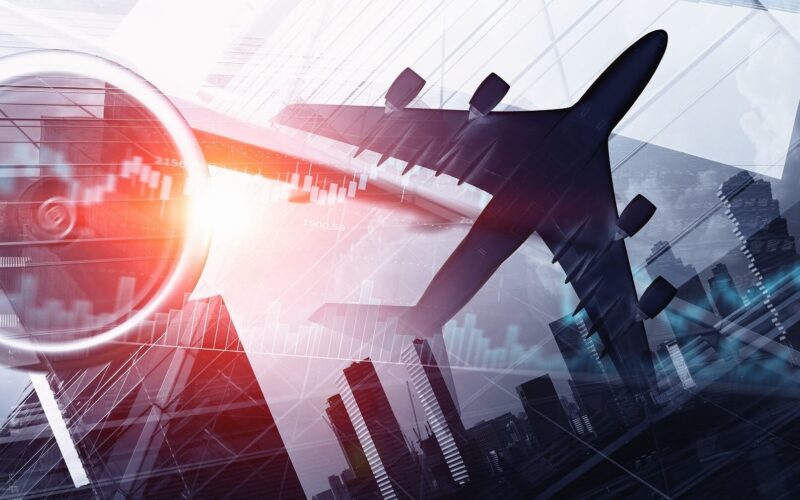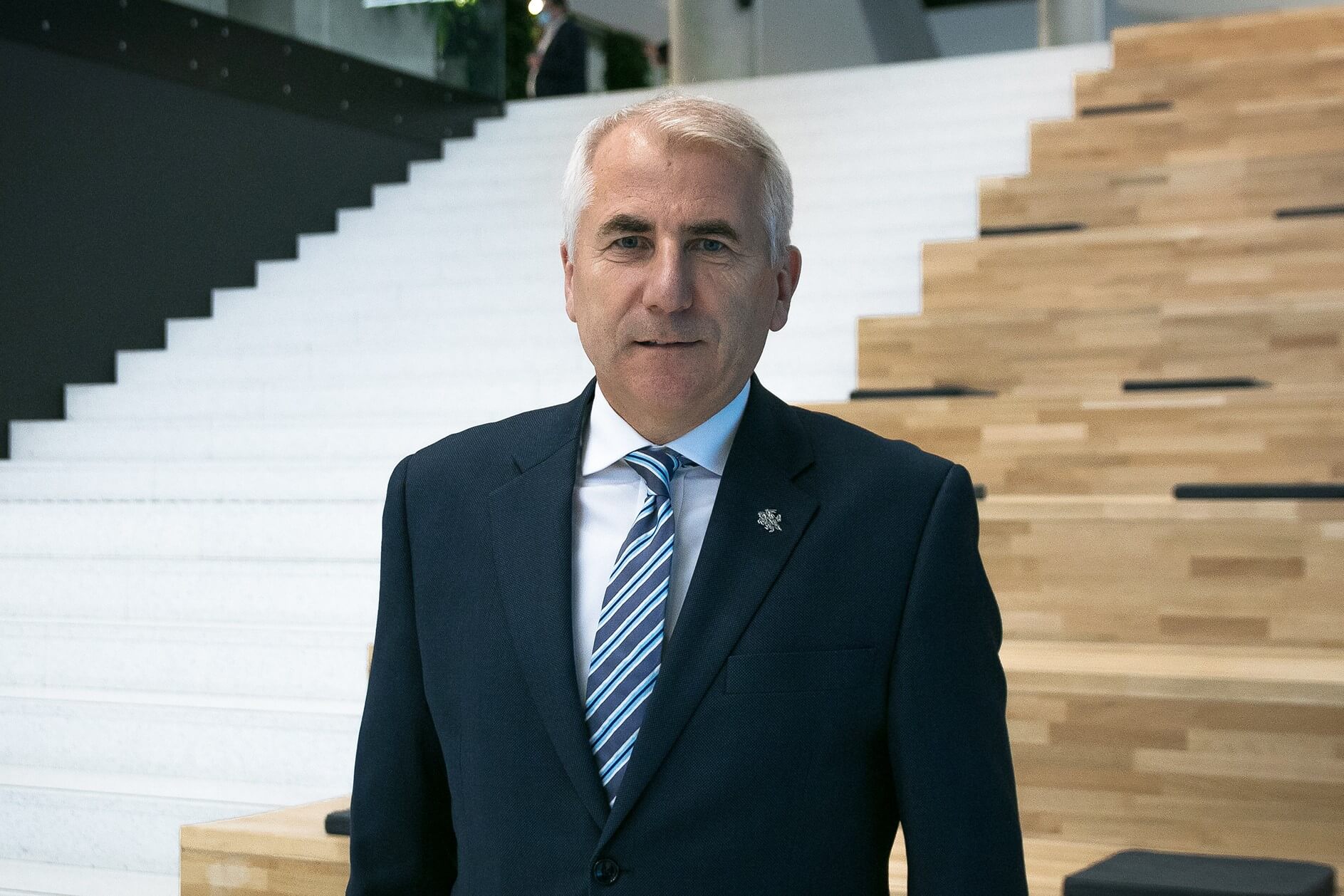It’s 2021 and the aviation industry has survived its worst crisis yet. Now, as every forecast shows a full recovery in the next two to five years, it’s in the process of achieving unparalleled growth. But the sector has to decide what lessons can be learned – and how to avoid the same scenario repeating itself.
These lessons were the main theme of the workshop ‘Aviation After a Year of Pandemic – Economics, People, and Technology’, organized by the US National Academies of Sciences, Engineering, and Medicine at the end of June. In an attempt to determine what the future of the aviation industry will look like after the COVID-19 pandemic, the workshop assembled several panels of leading industry experts from various companies, authorities, and research institutions.
“The aviation industry has demonstrated its resilient character and a capacity to recover over and over again and it will do so again,” said Ambassador Vygaudas Usackas, one of the panelists on Operations, Performance, and Personnel, and a Member of the Board of Directors at Avia Solutions Group. The Ambassador points to a forecast by Boeing, showing the world’s commercial aircraft fleet will almost double – from 25,900 aircraft in 2019 to 48,400 in 2039 – over the next two decades.
Ambassador Vygaudas Usackas, Member of the Board of Directors Avia Solutions Group
One need only look to the past to confirm that the industry’s worst crises – such as the global financial crash of 2008 and the downturn that followed 9/11 – were reversed within several years, followed by growth. A similar picture is emerging of the post-COVID world.
But what changes in the aviation industry can usher in this new era of growth? Usackas says that this will depend on the dual approach taken by the industry. The recovery itself is just one half of the process; the focus on resilience has to be the other 50%. That includes understanding the current situation, adapting to it, and preparing for the future.
Navigating different policies
Some of the innovations are straightforward. From infrastructure changes to new protocols, we are witnessing many of them already. The coming years will see the same tendencies but more streamlined, more efficient, and, most importantly, more consistent.
The search for consistency is paramount. Different regions, different countries, and even different airports have different rules, protocols, and standards. Traveling through any region – be it East Asia, Europe, or the United States – means learning new routines at every step. Inconsistent practices lead to confusion, lack of trust, and leave room for errors.
“Even in such an integrated region as Scandinavia, every country has its own requirements for travelers, and it is very difficult to navigate all of them,” Usackas said.
There are numerous reasons for these inconsistencies. “When we formulate new policies, we often have to guess their impact,” Jeffrey Brown, Chief Operating Officer at the Port of Seattle, explained. According to Brown, there is a gap between the latest research and its implementation, and policymakers can’t help but lag behind.
But it doesn’t have to be that way. Ashok Srinivasan, Professor of Computer Science at the University of West Florida, says that universities are more than willing to collaborate with businesses to offer feedback on the existing situation as well as simulations of any future impacts. For example, projecting anticipated passenger movement through an airport’s facilities can lead to immense improvements in its design. “Airports are asking us for feedback. What they should be asking for are simulations,” said Srinivasan.
Technologies at the forefront of change
While the streamlining of rules and protocols in accordance with the newest research will be a visible part of impending changes, another revolution is on the way: a technological one.
The process of travel is increasingly touchless and electronic. Both industry and passengers are interested in minimizing personal contact, and solutions for that are skyrocketing in terms of quantity and variety.
Some of them are already omnipresent, such as online check-in. Others – including online handling of vaccination passports – are quickly becoming a necessity. Then there’s off-airport baggage collection, just one of a relatively new set of measures which will, in time, likely become more popular.
Other changes, while still being somewhat far away, may run even deeper. “The evolution of aviation leads to electric aircraft,” Brown admitted. Autonomy is an inseparable part of that and its impact on the process of travel can’t be understated.
“The future of aviation is as touchless as possible, as electronic as feasible,” Usackas concluded.
Other facets of technological progress include flexibility and diversification. In order to better adapt to change, industry players must find new ways to repurpose their assets, such as quickly altering their focus. A telling example of this is the mass transformation of passenger aircraft into freighters, carried out by many airlines as the demand for cargo transportation shot up during the pandemic.
“SmartLynx, a charter operator and a subsidiary of Avia Solutions group, had 31 passenger and no cargo aircraft in 2019. By 2025 we are planning to have almost 20 freighters,” Usackas said. Such a rapid transition is only possible thanks to a large increase in efficiency of MRO (maintenance, repair, and overhaul) practices, as well as a new, more flexible understanding of the market.
New practices and technologies are a large and essential part of the industry’s preparations to meet new challenges. But they are just one element, with innovations likely to run far deeper.
The human factor
“When it comes to modeling known unknowns, we are good at it. But unknown unknowns need a lot more development,” said Srinivasan.
Passengers’ response to progress can be one of those unknown unknowns. The human reaction is extremely difficult to predict and nearly impossible to model. New regulations can have a wildly different effect than anticipated, or no effect at all. Outdated and ineffective protection measures – the so-called ‘hygiene theater’ – cannot be abandoned as they instill confidence and are associated with cleanliness and safety; new measures, whose effectiveness has only just been proven, are slow to roll out due to distrust or simple confusion.
In the end, safety can be full of paradoxes. For example, drastic measures at the start of an epidemic are shown to be the most effective ones but, to the public, they often look like an overreaction – and lead to failure to comply.
With COVID-19, irrational behavior and inconsistent perceptions of danger have to be accounted for more than ever. Among frequent travelers, commuting to the airport is often perceived as more dangerous than the flight itself. Meanwhile, 75% of infrequent travelers perceive the flight as the most dangerous part of their journey, and only 3% are wary of the commute.
“All solutions have to take human response into account,” Srinivasan said. “Rather than complaining about it, we have to accept it as a reality and include it into design and planning.”
Meanwhile, the human factor operates at other levels. At the height of the pandemic, it could be argued that there was an increase in irresponsible actions by governments, companies, and agencies as national interests and striving for profit conquered common sense. When it came to the sharing of limited resources – such as personal protection equipment (PPE) – international collaboration took a back seat; as the cargo fleet became overwhelmed and prices soared, national protectionism was rampant.
“First, some governments enacted protectionist measures – for example, non-Chinese companies like ours could not conduct more than 10 flights per month to China, which was done to bolster Chinese carriers,” Usackas explained. “Second, as cargo transportation prices skyrocketed, some governmental agencies received preferential access to it. The price of trans-pacific cargo flight on Boeing 747 jumped from $450,000-$550,000 to $1.2-$1.5 million in May-June 2020. Some countries’ taxpayers had to pay that price, while others could not afford it.”
While the aviation industry has to account for irrational human behavior at a personal level, it has no choice but to strive for transparency, openness, and an integrated approach on the international stage.
“If we want to prepare for the unforeseen, we have to develop a comprehensive response in a collaborative matter, which will go beyond national borders,” Usackas concluded.


